Make the best use of Scientific Research and information from our 700+ peer reviewed, Open Access Journals that operates with the help of 50,000+ Editorial Board Members and esteemed reviewers and 1000+ Scientific associations in Medical, Clinical, Pharmaceutical, Engineering, Technology and Management Fields.
Meet Inspiring Speakers and Experts at our 3000+ Global Conferenceseries Events with over 600+ Conferences, 1200+ Symposiums and 1200+ Workshops on Medical, Pharma, Engineering, Science, Technology and Business
Review Article Open Access
Enzyme Inhibitors as Therapeutic Tools
| Mahmoud Balbaa1* and El Sayed H. El Ashry2 | |
| 1Biochemistry Department, Faculty of Science, Alexandria University, Alexandria, Egypt | |
| 2Chemistry Department, Faculty of Science, Alexandria University, Alexandria, Egypt | |
| *Corresponding Author : | Mahmoud Balbaa Biochemistry Department, Faculty of Science Alexandria University, Alexandria, Egypt Fax: + 961-1818402 E-mail: m_balbaa@hotmail.com |
| Received September 12, 2012; Accepted October 04, 2012; Published October 08, 2012 | |
| Citation: Balbaa M, El Ashry ESH (2012) Enzyme Inhibitors as Therapeutic Tools. Biochem Physiol 1:103. doi:10.4172/2168-9652.1000103 | |
| Copyright: © 2012 Balbaa M, et al. This is an open-access article distributed under the terms of the Creative Commons Attribution License, which permits unrestricted use, distribution, and reproduction in any medium, provided the original author and source are credited. | |
Visit for more related articles at Biochemistry & Physiology: Open Access
Abstract
The enzyme inhibition is valuable in the regulation of the enzyme activity. It has many applications, which include the drug design to target an enzyme. In the present review, we focus on the inhibition of different enzymes such as glycosidases, arylsulfatases and others by synthetic inhibitors or drugs. This provides the strategy that combines the inhibitory and therapeutic mode of action of the confirmed inhibitors.
| Keywords |
| Enzyme; Inhibition constant; Drugs; Glucosidases; Arylsulfatases; Transcarbamylase |
| Overview |
| Enzyme inhibitors are molecules that bind to enzymes and lower their activity. Many drugs are enzyme inhibitors due to the correction of metabolic imbalance may occur, as a result of blocking an enzyme activity. Therefore, the discovery of enzyme inhibitors is an active area of research in biochemistry and pharmacology. Not all molecules that bind to enzymes are inhibitors; enzyme activators bind to enzymes and elevate their enzymatic activity [1,2]. Inhibitor binding is either reversible or irreversible. Usually, irreversible inhibitors react with the enzyme and change it chemically. Reversible inhibitors bind non-covalently to produce different types of inhibition, depending on whether these inhibitors bind the enzyme, the enzyme- substrate complex, or both. There are different types of reversible inhibition that may be competitive, non-competitive types and uncompetitive, although a mixed type sometimes arises [1,2]. |
| In competitive inhibition, the substrate and inhibitor cannot bind to the enzyme at the same time. It can be overcome by sufficiently high concentrations of substrate. Competitive inhibitors are often similar in structure to the real substrate. Non-competitive inhibition is a form of inhibition where the binding of the inhibitor to the enzyme reduces its activity, but does not affect the binding of substrate. However, an allosteric effect occurs where the inhibitor binds to a different site on an enzyme. The value of the inhibition constant (Ki) is used as an indication for the degree of enzyme inhibition [2]. There is a mixedtype inhibition that is a form of the non-competitive type [1]. |
| The inhibition pattern is studied by both Lineweaver-Burk and Dixon plots. Lineweaver-Burk plot is drawn by plotting the reciprocal values of the initial velocity of the enzymatic reaction (1/v) versus the reciprocal values of substrate concentration (1/[S]), in the absence and presence of different fixed concentrations of the inhibitor. Dixon plot of enzyme reaction is drawn by plotting 1/v versus the inhibitor concentration, [I], in presence of different fixed concentrations of substrate, [S] [3]. In Lineweaver-Burk plots, the lines of 1/v versus 1/[S] in the presence of several concentrations of the inhibitor [I], intersect at the same point on the vertical axis for the competitive type, and intersect at the same point on the horizontal axis for the noncompetitive type. The lines of the mixed type intersect between the two axes. In Dixon plots, the lines of 1/v versus [I] in the presence of several concentrations of [S] (increasing towards the horizontal axis), intersect between the two axes for the competitive type, whereas they intersect at the same point on the horizontal axis for the non-competitive type. The lines of the mixed type intersect at the same point on the vertical axis. |
| According to the Michaelis-Menten kinetics of the enzyme reaction, Vmax describes the maximum initial velocity of the enzyme reaction as an indication of the saturation of the enzyme by its substrate. The Michaelis constant (Km) is the substrate concentration at half maximum velocity of a steady state reaction. Its value is an indication for the affinity of the enzyme to a specific substrate. In the enzyme inhibition, these kinetic data of the enzyme reaction (Vmax and Km) may be changed according to the inhibition type. The competitive inhibitors do not alter Vmax and increase Km. Competitive inhibition can be prohibited by increasing substrate concentration, and block substrate binding to the active site of an enzyme. On the other hand, the non-competitive inhibitors do not alter Km value and decrease Vmax. This type of inhibition cannot be prohibited by adding excess substrate. The inhibitor binds to a site outside of catalytic site of enzyme and acts by decreasing the turnover number of an enzyme [1]. |
| Inhibition of Glycosidases |
| Glycosidases are carbohydrate-processing enzymes that have a variety of roles in important biological processes [4-6]. Modifying or blocking these processes for therapeutic or biotechnological applications, with the use of potent and selective inhibitors for these enzymes has become an interesting target. Lysosomal α-glucosidase (α- D-glucoside glucohydrolase, EC 3.2.1.20) is an exoglucosidase that has both a-(1.4)-and α-(1.6)-glucosidase activities. This enzyme plays an important role in glycogen breakdown, by catalyzing the hydrolysis of lysosomal glycogen [7]. Many mammalian acid α-glucosidases have been purified from different sources [8]. Acid α-glucosidases possess both maltase and glycoamylase activities [9], and these have pH optima in the range of pH 4-5 [9-19]. Another important lysosomal glycosidase is β-glucuronidase (β-D-glucuronide glucuronohydrolase, EC 3.2.1.31), which hydrolyzes the glucuronide bond at the nonreducing terminal of glycosaminoglycans [20]. The level of this enzyme activity is elevated in some human tumors [21-23]. It has been reported that acidic α-glucosidases are regulated within the regulation of lysosomal glycogen metabolism [8], whereas β-glucuronidase is regulated by phosphorylation of its carbohydrate [21] or protein [24] moieties. Glycosidase inhibitors [25-27] exert their biological effect by competitively inhibiting specific glycoside-processing enzymes, and much attention has been directed to developing therapeutic agents acting on such enzymes, whereby some potential beneficial drugs are clinically evaluated [28,29]. 1-Deoxynojirimycin (dnm) (Figure 1) is a potent inhibitor for all types of mammalian α-glucosidases, and has anti-HIV activity [30]. The respective derivative 1,5-dideoxy-1,5-[(6- deoxy-1-O-methyl-6-a-D-glucopyranosyl)imino]-D-glucitol (MDL 73945) (Figure 1) is a selective and potent intestinal α-glucohydrolase inhibitor [31]. The examination of the skeleton of 1-deoxynojirimycin and its analogues shows that the β-hydroxyalkylamine residue can be considered as a part of such inhibitors. The skeleton of MDL 73945 has the nitrogen linked to the C-6 of a 6-deoxyglucoside. |
| Since the structural analogues of dnm [5,6,32] are important, glycosidase inhibitors having these structural features were designed by considering the disconnection in DNM, such as ethanolamine and diethanolamine. Replacing the 1-deoxynojirimycin (DNM) ring by a simple cyclic amine ring having a chair conformation, and characterized by a close similarity to the DNM moiety, led to DNM derivative whose inhibition constant (Ki) was found to be 1.3 x10-4 M. This value of Ki is considered in the range of action against β-glucosidase from sweet almond [33]. Therefore, phenylglucoside was intensively studied as an enzyme inhibitor. It was found that the magnitude value of the inhibition constant of enzymes is dependent on the structure of the inhibitor [34]. Both α-glucosidase and β-glucuronidase were inhibited in vitro and in vivo by mono and diethanolamines [34]. Phenyl 6-deoxy-6-(morpholin-4-yl)-β-D-glucopyranoside (Figure 2) inhibited α-glucosidase, both in vitro and in vivo. The in vitro treatment of the enzymes by ethanolamine displayed a reversible inhibition of the mixed and competitive types for α-glucosidase and β-glucuronidase, respectively. Diethanolamine has a reversible inhibition of the competitive type for both enzymes. This compound is a potent inhibitor for β-glucuronidase in vitro, whose inhibition constant (Ki) is 5x10-5 M. Phenyl 6-deoxy-6-(morpholin-4-yl)-β-D-glucopyranoside (Figure 2) is also a potent inhibitor, only for hepatic α-glucosidase with a Ki value of 1.6x10-5 M. The pH profile of the enzymatic assay was not affected by ethanolamine inhibition [34]. |
| Nojirimycin and deoxynojirimycin are potent inhibitors of glucosidases [35-39]. A good competitive inhibition of sweet almond β-glucosidase has been exhibited by the amidine [40] and the amidrazone [40,41]. 1,2,4-triazole competitively inhibited β-glucosidases from sweet almond and Caldocellum saccharolyticum [42], in contrast to respective 1,2,3-triazole and tetrazole analogues [43,44]. Therefore, acyclic analogue of 1,2,4-triazole was designed by applying the disconnection at the C-N bond, to offer the respective seco-analogue. This postulation has been supported by the inhibition of yeast α-glucosidase by some acyclic analogues such as 2-deoxy-2- (1-hydroxyeth-2-yl)amino-glycerol which displayed a competitive [45], but exhibited uncompetitive inhibition of β-glucosidase [46]. Furthermore, the presence of a basic group as well as functional groups capable of hydrogen bonding may stimulate the binding to the enzyme. The in vitro and in vivo effects of 4-amino-3-(D-glucopentitol-l-yl)-5- mercapto-1,2,4-triazole [47,48] and its simple analogue 4-amino-3- methyl-5-mercapto-1,2,4-triazole (Figure 1) [49], on purified hepatic α and β-glucosidases, β-glucuronidase and α-amylase have been studied. α-glucosidase is the enzyme that is markedly affected, both in vivo and in vitro in a dose-dependent manner by 4-amino-3-(D-glucopentitol-lyl)- 5-mercapto-1,2,4-triazole and its 3-methyl analogue (Figure 1). The in vivo and in vitro effects of on α-and β-glucosidases, β-glucuronidase as well as α-amylase have been investigated. The compounds have a reversible inhibition of a competitive type for α-glucosidase. Moreover, they exert a relatively potent in vitro inhibition on α –glucosidase, with a Ki magnitude of 10-4 to 10-5 M [50]. |
| Recently, the in vitro treatment of some glycosidases by 4,5-diphenylimidazole-2-thione (Figure 3) exhibited a reversible inhibition of the non-competitive type, with Ki value of 3.5 and 6.5 x 10-5 M for α-glucosidase and α-amylase, respectively. 4,5-diphenyl-1,2,4-triazole-3-thione (Figure 3) showed a reversible inhibition of the competitive and non-competitive types, with Ki value of 10-5M magnitude for α-glucosidase and α-amylase. No observation of an inhibitory effect towards α-amylase was detected by 5-(o-hydroxyphenyl)-4-phenyl-1,2,4-triazole-3-thione (Figure 3). On the other hand, this compound has a potent inhibition of the competitive type for hepatic α-glucosidase with 10-5 M magnitude of Ki value [51]. The therapeutic effect of these compounds is being intensively studied in coccidian infection of rabbits [52]. |
| Schistosomicidal Drugs |
| The chemotherapeutic treatment of schistosomiasis occurs with praziquantel or oxamniquine [53]. Praziquantel is the drug of choice because it is more effective than oxamniquine, especially for the treatment of the infection by Schistosoma mansoni [54]. Alternatively, extracts from herbal products are used as effective schistosomicidal drugs [55], due to drug resistance to praziquantel [56]. An important herbal antischistosomal therapy is derived from myrrh from the stem of the plant Commiphora molmol [53]. |
| However, a change in various enzymes was observed during Schistosoma mansoni such as arylsulfatase B [57], and many hydrolases [58-61]. Arylsulfatases A, B and C (arylsulfo-hydrolases) are a group of hydrolytic enzymes that occur in various tissues and fluids [62]. Arylsulfatase B (EC 3.1.6.9) is a lysosomal hydrolase, which desulfates the non-reducing terminal N-acetylgalactosamine 4-sulfate residues present in glycosaminoglycan [62]. Since this enzyme is significantly increased in schistosomiasis [59], and its properties in this disease are still obscure, the interaction of some drugs that are used for the treatment of schistosomiasis with this enzyme was investigated. The effect of drugs in vitro on the purified enzyme from the liver of the infected mouse is examined, to find their influence on its catalytic and immunological properties. The binding properties between this enzyme and its specific antibody are studied in a comparative manner, and both kinetic and immunological properties are investigated in the absence and presence of the drugs. |
| The catalytic and immunological properties of purified arylsulfatase B from the liver of Schistosoma-infected mouse was investigated in the presence and absence of the schistosomicidal drugs, praziquantel and Commiphora extract. The in vitro effect of praziquantel was found to be inhibitory with a Ki value of 5.5 X 10-4 M, while that of Commiphora extract was as an activator [63]. |
| In another kinetic study, the purified succinate-cytochrome c reductase (SCR) in the absence and presence of the schistosomicidal drugs praziquantel and Commiphora extract, reveal that both drugs have an inhibitory action on the enzyme from the control and Schistosoma-infected mice. Praziquantel changes the type of inhibition of the enzyme towards cytochrome c (Cyt c) from mixed type in control to a competitive one in the case of the infection [61]. On the other hand, Commiphora extract changes the inhibition pattern of the enzyme towards 2,6-dichlorophenolindophenol (DCIP) or Cyt c from mixed type in control to competitive one for the enzyme from infected mouse, towards either DCIP or Cyt c. The effect of praziquantel and Commiphora extract was performed in vitro on the purified enzyme from the liver of control and Schistosoma-infected mouse, respectively [64]. |
| SCR catalyzes the oxidation of Cyt c or DCIP [65], and plays an important role in biological respiration [66]. The enzyme exist in a complex that is described as reconstituted active succinate dehydrogenase, possesses the ability to reconstitute with hydroquinone [67], or with soluble cytochromes bc1 complex [68], and uses ubiquinone as an electron acceptor [69]. This initiated the study of the effect of schistosomiasis on this enzyme. Hence, the study of the characterization of this enzyme in Schistosoma-infected and control mice was performed in a whole investigation of biomarkers of this infection. |
| Respiratory Drugs |
| Some drugs have been implicated in various respiratory and cardiac effects. Phenobarbitone is a sedative of the central nervous system and acts as a short acting barbiturate in the sedation of Angina pectoris [70]. Moreover, it has been reported as anticonvulsant drug and inhibits brain oxidative reactions in a convulsion mode [71]. Neostigmine, which is a stimulant of the parasympathetic nervous system, acts as a reversible anti-cholinesterase [72]. It is used in the control of the muscular disease, myasthenia gravis, and the treatment of certain types of glaucoma [68]. Also, it is implicated in the development of postoperative nausea [73]. Aminophylline is a vasodilator [74], which improves the cardiac index and pulmonary vascular resistance [75]. Gallamine (or flaxedil), which is chemically 1,3-tris-(diethylaminoethoxy)-benzene triethiodide, is considered as muscle relaxant, that has a cardiovascular effect [76,77]. These drugs have enormous marketing for medication, without enough knowledge of their specific action on the enzymes of the respiratory chain. Therefore, they were selected to study their effect on succinatecytochrome c reductase due to certain similarity in their structure. |
| SCR was inhibited in vitro and in vivo by phenobarbitone, aminophylline and neostigmine using both 2,6-dichlorophenolindophenol and cytochrome c as substrates [78]. The enzyme was also activated by gallamine towards both substrates. Phenobarbitone and aminophylline inhibited the enzyme, with respect to the reduction of the substrate in a non-competitive manner with Ki values of 10-5 magnitude. Moreover, neostigmine competitively inhibited the enzyme towards both substrates with Kj values of the same magnitude [78]. |
| Inhibition of Aspartate Transcarbamylase |
| Aspartate transcarbamylase (abbreviated as ATCase, EC 2.1.3.2) catalyzes the second reaction in pyrimidine biosynthesis, which is the carbamylation of the α-amino group of L-aspartate by Carbomyl Phosphate (CP) to yield carbamoyl aspartate and inorganic phosphate [79-81]. The hepatic enzyme is inhibited by phenobarbital p-nitrophenylhydrazone in a reversible and non-competitive type with Ki magnitude of 10-5 M in the reactions towards CP and aspartate, respectively [82]. In vivo inhibition occurred in a dose-dependent manner [82]. In a later study, in vitro treatment of the hepatic enzyme with different quinazolinone derivatives (Figure 4) showed that they inhibited the enzyme activity, and that of 2-phenyl-1,3-4(H) benzothiazin-4-thione is the most potent one. This compound acts as a non-competitive inhibitor towards both aspartate and carbamoyl phosphate. The values of the inhibition constant (Ki) indicate that this compound exerts a potent inhibitory effect upon the enzyme activity [83]. According to Lineweaver-Burk plot, different concentrations of 2-phenyl-1,3-4(H)benzothiazin-4-thione yielded an inhibition pattern, in which the lines intersected at the horizontal axis and Vmax of the enzyme towards aspartate was decreased, and the observed Km value is unchanged. Therefore, the type of inhibition is a non- competitive type. The observed values of Km and dissociation constant of the enzyme inhibitor complex, Ki, were found to be 6.70 mM and 6.6x10-5 M, respectively. |
| Similarly, the same inhibition pattern of the non-competitive type is obtained when CP is subjected as a substrate. The observed Km value of the enzyme is 1.25 mM. The observed Ki value for 2-phenyl-1,3- 4(H)benzothiazin-4-thione was determined as 9x10-5 M. On treating the enzyme by different concentrations of 3-amino-6,8-dibromo-2- phenyl-4-(3H)quinazolinone, Vmax of the enzyme towards aspartate was decreased. The observed Ki value is 8.6x10-5 M. The detected inhibition pattern is also a non-competitive type, since a comparison between the control and treated enzyme with this compound showed that there is no change in Km value that is 6.70 mM in both cases. On using CP as a substrate, the treated enzyme with 3-amino-6,8- dibromo-2-phenyl-4-(3H)quinazolinone showed a decreased Vmax and unchanged Km, that is equal to 1.25 mM. The observed Ki was found to be 1x10-4 M. However, the observed Ki value determined by Dixon plots that is made by plotting 1/v against different concentrations of 2-phenyl-1,3-4(H)benzothiazin-4-thione and 3-amino-6,8-dibromo- 2-phenyl-4-(3H)quinazolinone, were nearby to those obtained by the reciprocal plots [83]. |
| A comparison between the enzyme inhibitors, in respect to the inhibition type and inhibition constant (Ki) of the reported enzymes in this review is illustrated (table 1). The magnitude of Ki is expressed in the molar range and measured at the standard conditions for each enzyme. In fact, the inhibitor potency is dependent on many factors such as the chemical structure of the inhibitor, a variety of amino acid residues in the enzyme, shape complementarities of the inhibitor, the equilibrium between an enzyme and its inhibitor, and the different types of interaction [1,84,85]. |
| Inhibitors of Other Enzymes |
| Carbonic anhydrases |
| The carbonic anhydrases (EC 4.2.1.1) form a family of enzymes, which are classified as metalloenzymes and have an important catalytic function. These enzymes catalyze the interconversion of carbon dioxide and water to bicarbonate and protons, and vice-versa. The reaction is reversible and occurs slowly in the absence of the enzyme [86]. Most types of carbonic anhydrases contain zinc ion in their active site. An important function of these enzymes is the catalysis of the interconversion of carbon dioxide and bicarbonate, to maintain acidbase balance in blood and other tissues. This helps in the transport of carbon dioxide out of tissues. The enzymes have the fastest catalytic rate constant, among other enzymes [87]. Carbonic anhydrase inhibitors can be used for long periods of time to treat people who have not been able to tolerate eye drops. They are also used when eye drops alone have not been effective in decreasing the pressure in the eyes. These inhibitors are very effective for lowering the pressure in the eyes [88]. |
| Cyclooxgenases |
| The cyclooxygenases (EC 1.14.99.1, COX-1 and COX-2) are membrane-associated and hemoproteins. These enzymes are homodimers that generate prostaglandin H2 from arachidonic acid through prostaglandin biogenesis, and are the targets for nonsteroidal anti-inflammatory drugs. The compound N-(2-cyclohexyloxy-4- nitrophenyl)methane sulfonamide (NS-398) was the first in a series of isoform-selective drugs, designed to preferentially inhibit COX- 2. X-ray crystal structure of murine COX-2 in complex with NS-398 was determined utilizing synchrotron radiation to 3.0A resolution [89]. NS-398 binds in the cyclooxygenase channel in a different conformation from that observed for other COX-2-selective inhibitors, such as celecoxib. Moreover, the methane sulfonamide moiety of NS- 398 interacts with the side chain of Arg 120 residue, at the opening of the cyclooxygenase channel. This occurs similarly to that observed for acidic nonselective, nonsteroidal, anti-inflammatory drugs such as indomethacin and flurbiprofen. Arg 120 residue was identified as a molecular determinant for time-dependent inhibition of COX-2 by NS-398 [89]. Recently, a novel inhibitor for cyclooxygenase-1 FK881 was found to be useful in treating symptoms of rheumatoid arthritis and osteoarthritis. Its inhibitory effect is potent and selective for COX- 1 [90]. |
| Topoisomerase |
| Topoisomerase I and II (type I: EC 5.99.1.2, type II: EC 5.99.1.3) are enzymes that regulate the changes of the structure of DNA. These enzymes catalyze the breakdown and rejoining of the phosphodiester backbone of DNA strands, during the normal cell cycle [91]. Topoisomerase inhibitors are designed compounds, for the interference with the action of topoisomerase enzymes [91]. It is thought that topoisomerase inhibitors block the ligation step of the cell cycle, generating single and double stranded breaks that harm the integrity of the genome. Introduction of these breaks subsequently lead to apoptosis and cell death. Topoisomerase inhibitors can also function as antibacterial agents, and quinolones are among these compounds [92-93]. |
| Topoisomerase inhibitors are often classified, according to which type of enzyme it inhibits. Topoisomerase I inhibitors are irinotecan, topotecan, camptothecin, lamellarin D, and all target type IB topoisomerases. Topoisomerase II inhibitors are etoposide, teniposide, aurintricarboxylic acid [94], and the quinolone HU-331 (Figure 5) that is synthesized from cannabidiol. Numerous plant derived natural phenols such as epigallocatechin-3-gallate (Figure 5), genistein, quercetin and resveratrol were reported. They possess potent topoisomerase inhibitory effects, affecting both types of enzymes [95-99]. However, the use of topoisomerase inhibitors for antineoplastic treatments may lead to secondary neoplasms because of DNA damaging properties of the compounds. Also, plant derived polyphenols show signs of carcinogenity, especially in fetuses and neonates who do not detoxify the compounds in a sufficient way [100-102]. An association between high intake of tea during pregnancy and elevated risk of childhood malignant central nervous system (CNS) tumours has been found [103,104]. |
| There are compounds that target Type II topoisomerase. These inhibitors are divided into two main classes: topoisomerase poisons, which target the topoisomerase-DNA complex, and topoisomerase inhibitors, which disrupt catalytic turnover. Topoisomerase poisons include eukaryotic type II topoisomerase inhibitors (topo II) such as amsacrine, etoposide, etoposide phosphate, teniposide and doxorubicin. These drugs are anti-cancer therapies. Bacterial type II topoisomerase inhibitors (topo IV) include fluoroquinolones. These are antibacterials and include such fluoroquinolones, as ciprofloxacin. Some of these poisons encourage the forward cleavage reaction (e.g. fluoroquinolones), while other poisons prevent the re-ligation of DNA (e.g. etoposide and teniposide). In addition, the poisons of type IIA topoisomerases can target prokaryotic and eukaryotic enzymes, preferentially. Ciprofloxacin targets prokaryotes in excess of a thousand fold more than it targets eukaryotic topo II. The mechanism for this specificity is unknown, but drug-resistant mutants cluster in regions around the active site. Topo II inhibitors are inhibitors target the N-terminal ATPase domain of topo II, and prevent topo II from turning over. Examples of topoisomerase inhibitors include ICRF-193 [105] that binds in a non-competitive manner and locks down the dimerization of the ATPase domain [106]. |
| Conclusion |
| Enzyme inhibitors are molecules which reduce the enzymatic activity, and these inhibitors may include many drugs. There are different types of enzyme inhibitors, according to their structure and their site of action in the enzyme. In addition, completely different inhibition mechanisms may be operative in one enzyme inhibition. Studies with different enzymes and inhibition analyses are important, in order to clarify the structural requirements in the skeleton of the inhibitor. |
References
|
Tables and Figures at a glance
| Table 1 |
Figures at a glance
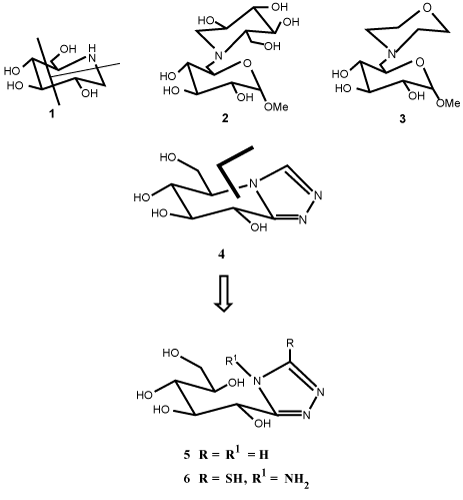 |
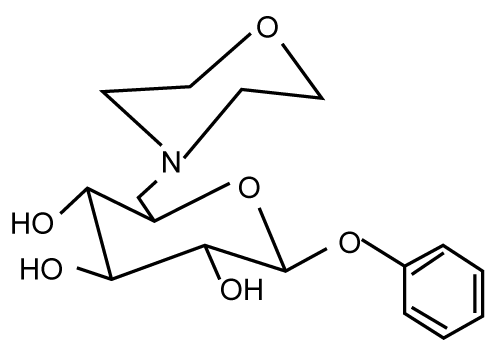 |
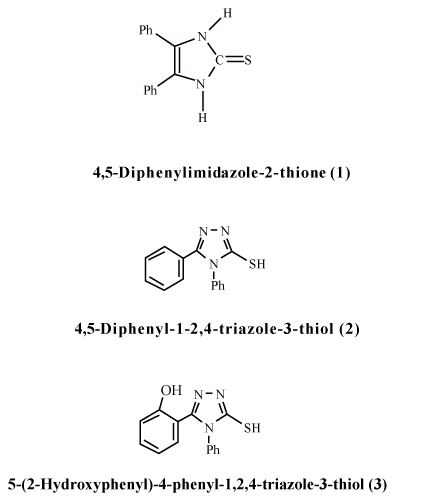 |
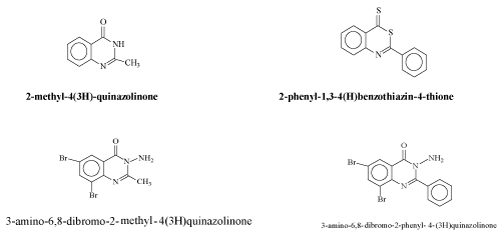 |
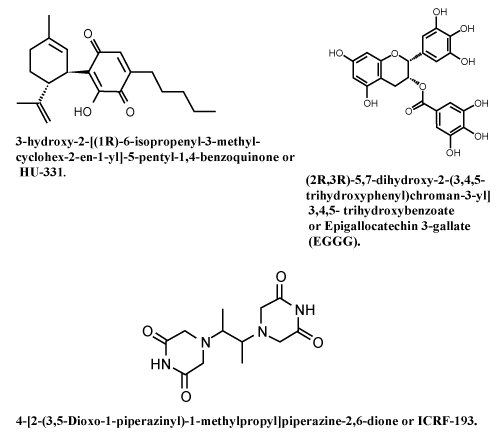 |
| Figure 1 | Figure 2 | Figure 3 | Figure 4 | Figure 5 |
Post your comment
Relevant Topics
- Analytical Biochemistry
- Applied Biochemistry
- Carbohydrate Biochemistry
- Cellular Biochemistry
- Clinical_Biochemistry
- Comparative Biochemistry
- Environmental Biochemistry
- Forensic Biochemistry
- Lipid Biochemistry
- Medical_Biochemistry
- Metabolomics
- Nutritional Biochemistry
- Pesticide Biochemistry
- Process Biochemistry
- Protein_Biochemistry
- Single-Cell Biochemistry
- Soil_Biochemistry
Recommended Journals
- Biosensor Journals
- Cellular Biology Journal
- Journal of Biochemistry and Microbial Toxicology
- Journal of Biochemistry and Cell Biology
- Journal of Biological and Medical Sciences
- Journal of Cell Biology & Immunology
- Journal of Cellular and Molecular Pharmacology
- Journal of Chemical Biology & Therapeutics
- Journal of Phytochemicistry And Biochemistry
Article Tools
Article Usage
- Total views: 21133
- [From(publication date):
October-2012 - Aug 29, 2025] - Breakdown by view type
- HTML page views : 15913
- PDF downloads : 5220
